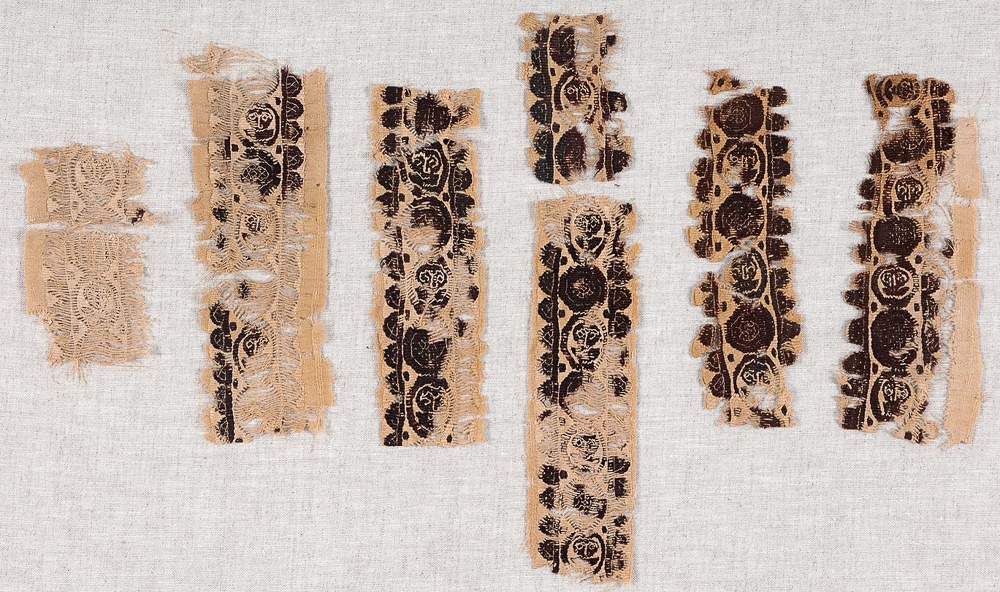Fragments of the same textile, with friezes of filled half-circles edging figures in busts alternating with rosettes (?) in identical succession, designed by flying thread.
Origin:
Egypt
Date:
5th - 6th century
Material:
Linen and wool
Dimensions:
1) warp: 5.7 cm, weft: 16 cm;
2) warp: 5 cm, weft: 15 cm;
3) warp: 4.5 cm, weft: 23.5 cm;
4) warp: 4.5 cm, weft: 14.5 cm;
5) warp: 4.5 cm, weft: 9 cm;
6) warp: 4.5 cm, weft: 6 cm; separate linen fragments;
7) warp: 1.5 cm, weft: 7 cm;
8) warp: 1.5 cm, weft: 3.5 cm;
9) warp: 1.5 cm, weft: 3 cm
Comparisons:
Cleveland Art Museum, inv. 1926.148
Whitworth Art Gallery, inv. T.1994.132.
Muséum de Colmar, inv. Ég. Cpt. 170.
Provenance:
Collection Coptic textiles Fill-Trevisiol: donation
Location:
Musée royal de Mariemont
Inwoven tapestry in linen cloth (visible on both fragments)
I. Ground weave
(small fragment)
Warp:
natural-coloured linen S: +/- 30/cm
Weft:
natural-coloured linen S: 22/cm
Weave:
warp-faced tabby
Other features:
self-bands: 3 x 3 yarns/pick
II. Tapestry areas
Warp:
linen S
Weft:
purple wool Z: +/- 56/cm; natural-coloured linen S: +/-60/cm
Weave:
extended tabby: irregular units of 2 and 3 warp yarns
Ribs per cm:
9-10
Special techniques:
slit tapestry, eccentric weft, flying thread brocading linen S
